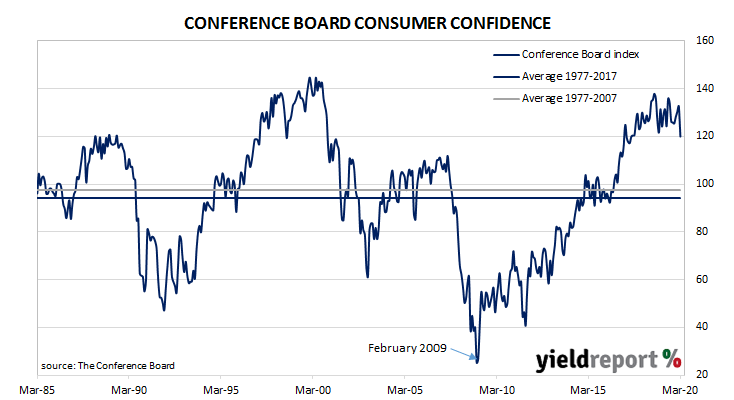US consumer confidence collapsed in late 2007 as the US housing bubble burst and the US economy went into recession. By 2016, it had clawed its way back to neutral and then went from strength to strength until late 2018. Measures of consumer confidence then oscillated within a fairly narrow band at historically high levels until March 2020.
The latest Conference Board survey held during the first half of March indicates US consumer confidence has deteriorated significantly. March’s Consumer Confidence Index registered 120.0, above the median consensus figure of 115 but well below February’s final figure of 132.6. Compared to consumers’ views held at the time of the February survey, their views of present conditions slipped a little while their views of future conditions softened considerably.
Lynn Franco, a senior director at the Conference Board said, “March’s decline in confidence is more in line with a severe contraction, rather than a temporary shock, and further declines are sure to follow.”
US Treasury markets reacted by mostly sending yields lower. By the end of the day, the yield on 2-year Treasury bonds had inched up 1bp to 0.23% while the 10-year yield had lost 6bps to 0.66% and the 30-year yield had shed 2bps to 1.34%.
In terms of US Fed policy, a rate change of any sort remained unlikely given the federal funds rate has been at the effective lower bound since the US Fed reduced it on Sunday 15 March. Contract prices out to March 2021 imply traders expect no change in the federal funds rate over the next 12 months.

